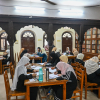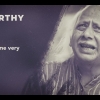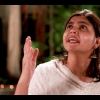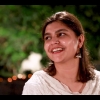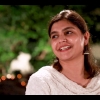Q.: Where do you think the relevance of Comparative Literature lies vis-a-vis the socio-cultural context of India?
Ganesh Devy: India is a multilingual country. The literary traditions in India have evolved through numerous languages. In our country, literature is closely linked with music, dance, theatre, sculpture and painting (as in the case of the Gitagovinda or the Mahabharata or Bharata's Natyashastra).
Therefore, in order to understand literature in any given Indian language, one requires at least some background knowledge of literature in other Indian languages as well as the other arts. Obviously, a monolingual literary study is an inadequate method in the Indian context. Hence, Comparative Literature is the most appropriate approach to literature for Indian literary studies.
Besides, through the colonial influence, the Indian sensibility has come to think of the west and the east as the essential components of a literary sensibility for a modern Indian writer. Given this mix, the most natural approach to reading literature as well as creating it needs refer to several literary canons and literary traditions. Comparative Literature is the normal thing for India.
Q.: How would you locate the factors that led you to the disciplinary practice of Comparative Literature?
G.D.: I grew up reading Marathi, speaking Marathi and Gujarati, hearing Marathi and Kannada, reading Marathi, Hindi and English. I studied English Literature in college and university. Later, I went to England to study Anglo-Irish Literature. During my early days as a research scholar, I was exposed to Australian, Canadian and African Literature. My time in various libraries gave me exposure to Russian, German, French and European Literature. I read in translation Greek classics. Much later, my work with Adivasis created the need for me to pick up 12 Adivasi languages. All in all, there was an impressive literary diversity to understand, enjoy, nurture and contribute to.
As a result, when I started writing my first book, I decided to focus on the Bhashas of India.
And whenever I took up speaking about or writing about any particular work, author, tradition, my mind could not escape the pull of many traditions, languages, styles, etc. In short, if you live amidst a fabulous literary wealth, you cannot but lavish your attention on several strands at the same time.
One became a Comparatist under these circumstances by the very nature of one’s cultural location.
Q.: How would you respond to the formation of the curriculum and the institutionalization of Comparative Literature in and from your location?
G.D.: I live in Gujarat. It has a presence of about eight million Adivasis who speak 23 different languages.
There is an excellent institution for Oriental Studies located in the city where I live. In terms of the demographic constitution, my city has a good percentage of the speakers of Marathi, Telugu, Bangla, Hindi and Nepali, besides the local language Gujarati. English is understood normally by at least ten per cent of the people in this city. If I were to formulate a study programme for the college students in my city, I would certainly place in it Gujarati, Marathi, Telugu, Bangla, Hindi and some Adivasi language texts/ oral materials in addition to English, Sanskrit, Prakrit, and Urdu.
Q.: How do you wish to incorporate the teaching of Indian Literature in the discipline of Comparative Literature?
G.D.: I have no plans. I am at present working on the Linguistic Survey of India. Perhaps, the 780 languages described in the 50 volumes of the Survey may have some indirect impact on the way literature is perceived in Indian academe.
Q.: How do you envisage the future of Comparative Literature?
G.D.: I envisage the future of Comparative Literature as a constantly changing future. From its beginnings in the 19th century, the scope and the purpose of Comparative Literature has not been the same beyond any given quarter of a century. They have changed every two or three decades. I imagine that is what will keep happening in future too. I hope it does.

